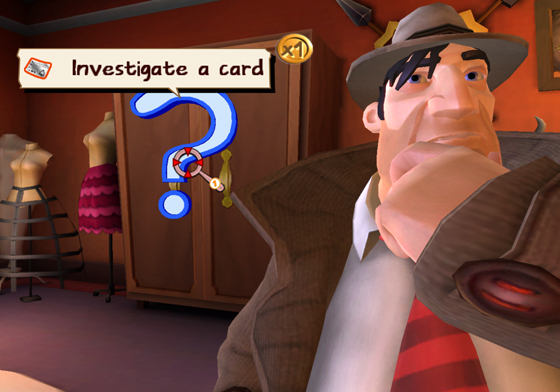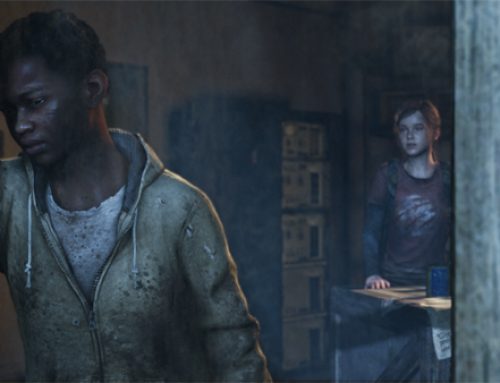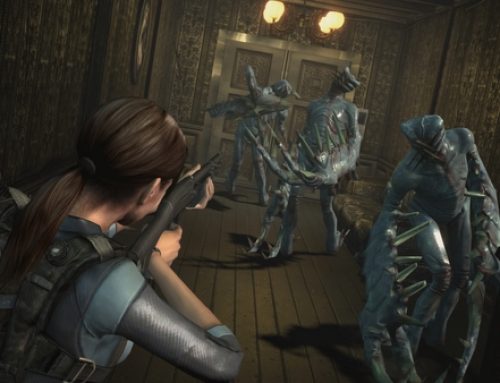
Max, one of the playable characters in "Guilty Party," is a chow hound who dreams of an acting career.
Since the Wii launched, its owners have been treated to a seemingly endless parade of family games with the words “family,” “party,” “play” and “fun” in the title. For the most part, these have been what the industry derisively refers to as “shovelware,” quick cash-ins that flood the market for relatively little cost to try to earn a quick buck.
Disney’s “Guilty Party,” a family mystery game (rated E, $40 on Wii), defies that trend, both with its punny name and its merging of the traditional minigame-compilation with a style reminiscent of the board game Clue.
In a game of “Guilty Party,” which supports up to four players, each gamer takes on the persona of one of six members of the Dickens Detective Agency, a family-owned outfit that features a range of ages and genders.
The game’s definition of “family” refreshingly accommodates a lot of possibilities. The agency is run by a white patriarch called the Commodore, who’s married to a woman named Olivia. The playable characters are their two adult children, bachelor Max and single mom Phoebe; Phoebe’s son, Rudyard, a.k.a. “Kid Riddle”; the Commodore’s elderly sister, Charlotte; her much younger husband, the strapping, black former police officer Butch; and their teenage adopted daughter, Ling-Ling.
The story mode sends the detectives on a hunt for Olivia, who’s been kidnapped by the Commodore’s nemesis, a criminal mastermind known only as Mr. Valentine. Beginning at the Dickens family mansion, you’ll follow his trail through levels including a train, aquarium and zeppelin, solving mysteries along the way.
The levels look different, but play out similarly. Players take turns hunting for clues and interviewing suspects, compiling what they find in a shared notebook. Before each clue is uncovered or each suspect divulges what they know, you must successfully complete a short, 30-second or so minigame using the Wii’s motion controls. You might wave the remote to dust for fingerprints or, in an unorthodox bit of sleuthing, tickle a suspect to get him to talk.
Most of the interrogation-based activities, such as hypnotizing suspects or putting words in their mouths, are ridiculously implausible, so if you seek realism in your party games featuring singing manatees, “Guilty Party” might rankle. I appreciated developer Wideload Games’ efforts to diversify the action.
While there are a few red herrings, most of the clues pertain to four physical attributes — height, build, gender and hair. You’ll spend the bulk of your time building a subject profile, ruling out suspects with short hair because a long hair was found at the crime scene, for example.
In the early going, groups will play cooperatively as everyone gets the hang of how to play. But “Guilty Party” allows for plenty of competitive scheming. For example, players get a fixed number of tokens — used to move, interview suspects and hunt for clues — each turn, but they don’t have to use them all. Instead, you can stockpile tokens until it’s almost time to catch the killer, then pull off one game-winning megamove.
Another devious element comes into play through the use of the lie detector. Each clue or suspect interview will have one key phrase embedded in it. When you use the Wii remote to point at that phrase, your lie detector will tell you whether the phrase is true. But, recognizing the fact that all players will be able to see the clues that are gathered when it’s not their turn, Wideload gave players the option to hold down the “1” button on the controller, causing the detector to give a false result.
To make sure everyone is on an even footing, “Guilty Party’s” minigames all come in three difficulty levels, meaning seasoned Wii veterans will be required to perform more complex tasks to get information out of a suspect. Newbies or people who are just bad at video games will have an easier time.
Once all, or most, of the clues have been found, players can then accuse one of the suspects of the crime based on the available information.
After you’ve finished the story mode, you can play a party mode, which reuses the story’s levels but randomizes the culprit, suspects and clues. Complexity of mysteries can scale. If you only have time for a short game, for example, you can choose an option that limits the numbers of clues and suspects.
It’s easy to appreciate what Wideload, whose previous game was first-person shooter “Stubbs the Zombie,” accomplished with “Guilty Party.” It’s an accessible, fun-to-play family game that tries to put everyone on equal footing. The mysteries generally aren’t terribly difficult to solve when played alone, but some of the more competitive elements such as the ability to bluff with the lie detector will add more mileage to group play.



